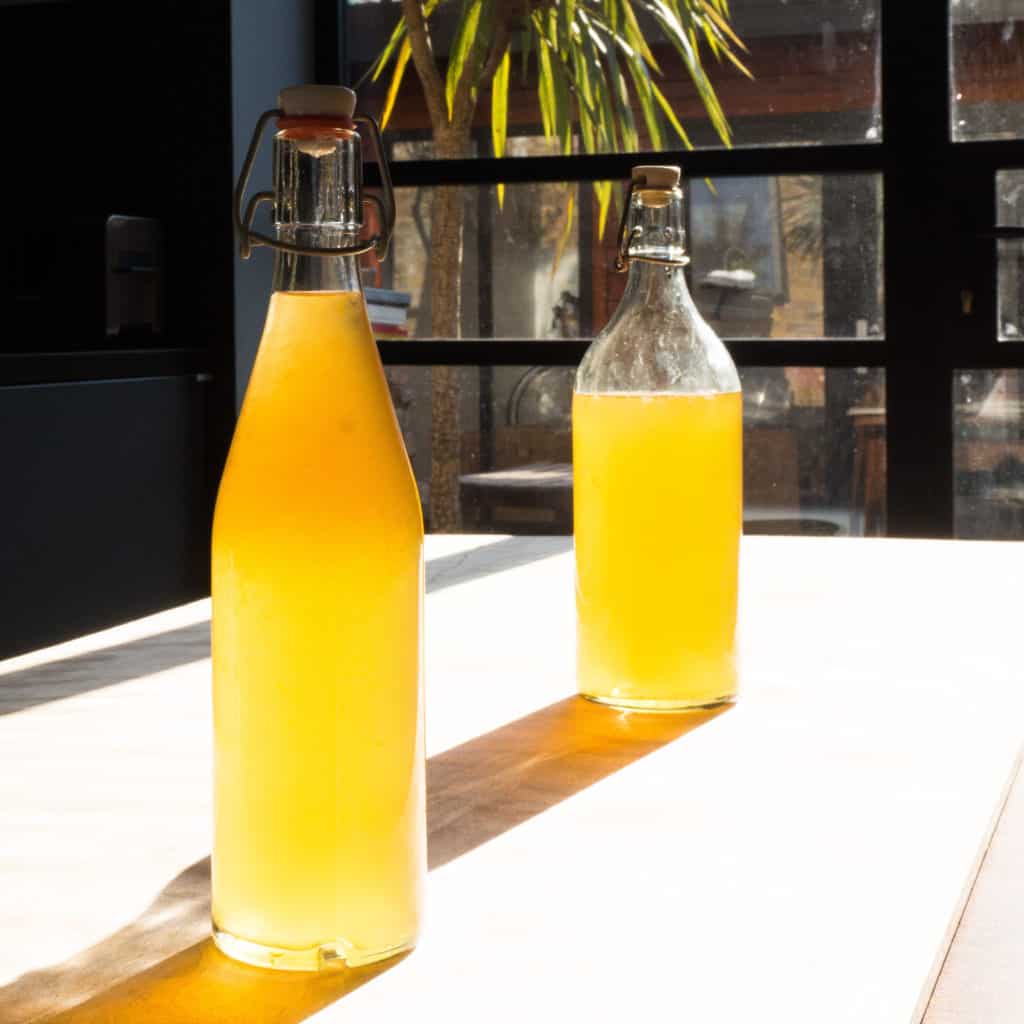
Elderflower Cordial is summer in a glass. Light, sweet and full of the scent of summer. The elder tree begins to flower in hedgerows (and wherever the tree crops up) in early summer and this is the best time to collect the flower heads – just before they are all open. Make sure you collect them when it is warm and dry rather than during or after rain. You will be able to tell if they are ripe for collecting by the smell. Leave enough flowers to produce elder berries later in the season which will bring even more joy.
Elderflower Cordial is so easy to make. It stores well for three to four weeks in the fridge or keeps in the freezer for six months or so. This recipe does not use citric acid (vitamin C) which will extend the storage capacity to three to four months. If you do wish to use citric acid (available from chemists) you can add 75 grams with the orange and lemon juice at the end of step 3 in the recipe.
Find the full Elderflower Cordial recipe here.
As well as the traditional drink you can also use Elderflower Cordial to make a wonderful sorbet, ice lollies or gently cook with acidic fruits such as gooseberries to make a lovely stewed fruit.
The best way to sterilise jars, funnels and other equipment is in the dishwasher. Just make sure when you remove items from the dishwasher you do not ‘de-sterilise’ them by touching any inside surface.
Preparation
Difficulty easy
Makes makes around 2.5 litres
Preparation time 10 minutes (plus steeping overnight)
Cooking time 10 minutes
Find the full Elderflower Cordial recipe here.
Allergens
Elderflower Cordial is gluten-free and vegan as well as…
Celery free
Coconut free
Garlic free
Lupin free
Mustard free
Nightshade free
Onion free
Peanut free
Sesame free
Soya free
Tree nut free
About
The elder tree belongs to sambucus a genus of flowering plants in the family adoxaceae. Sambucus occurs in temperate to subtropical regions of the world. It is more widespread in the Northern Hemisphere, in the southern Hemisphere it occurs parts of Australasia and South America. Many species are widely cultivated for their ornamental leaves, flowers and fruit.
The elderberries and elderflowers are both edible. Berries which are clusters of small black, blue-black, or red berries (rarely yellow or white) occur later in the season. In the UK elder is a common low-growing large shrub/ small tree that produces a blanket of creamy-white flower heads from mid-May to July. Elderflowers do look very similar to cow-parley so be careful and make sure you pick the correct flower (the smell of the flowers should be the giveaway).
Elderflowers are used to produce elderflower cordial which can in turn be made in to sorbet or icecream. St. Germain is an American liqueur (with faux-French branding) made from elderflowers. Hallands Fläder is a Swedish akvavit flavoured with elderflowers. It is also possible to make elderflower ‘Champagne’… Sounds delightful and something I plan on trying out soon…
The ripe, cooked berries of most species of sambucus are edible. However, uncooked berries and other parts of plants from this genus can be poisonous. Sambucus nigra is the only variety considered to be non-toxic, but it is still recommended that its berries be cooked before use. The leaves, twigs, branches, seeds, and roots of sambucus plants can contain a cyanidin glycoside. Ingesting a sufficient quantity of cyanidin glycosides can make you ill.